Trading Diary
July 18, 2002
The Nasdaq Composite lost 2.9% to close at
1356. The index is at the October 1998 support level.
The primary and secondary cycles are in a down-trend.
The S&P 500 dropped 25 points to close at
881, below the October 1998 support level.
Primary and secondary cycles trend downwards.
Advanced Micro Devices reported a second-quarter loss of 54 cents per share, compared to 5 cents for the same period last year. (more)
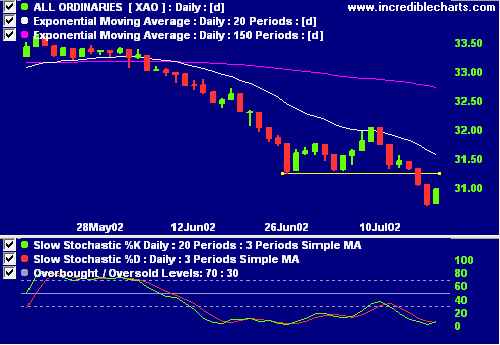
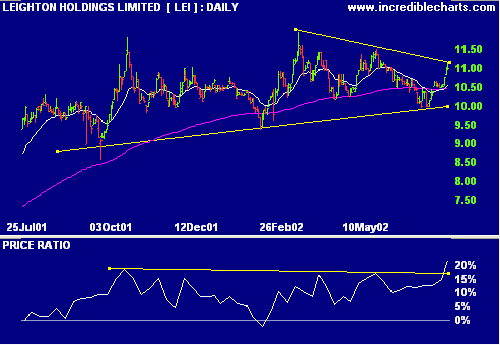
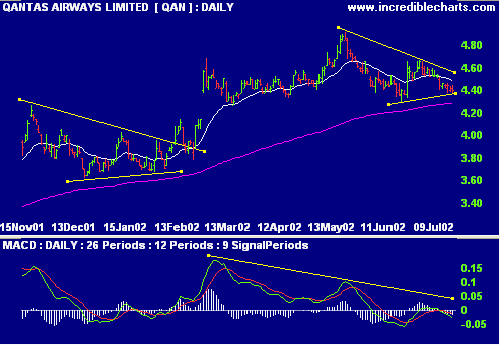
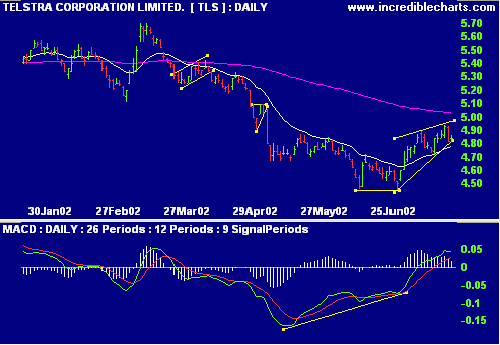
Singapore Telecom [STT] shows a bullish, ascending
triangle. A break above 1.55 would have a target of 1.86
(1.55 + (1.55 - 1.24)). The 150-day
moving average is declining and relative strength (price
ratio: xao) is still weak but MACD and
exponentially-smoothed Money Flow are
improving.
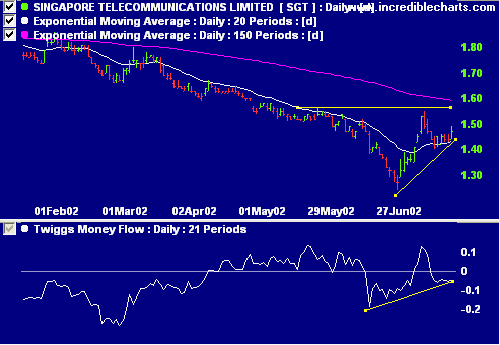
Small investors tend to be pessimistic and optimistic at precisely the wrong times, so it's self-defeating to try to invest in good markets and get out of bad ones. - Peter Lynch
Back Issues

Author: Colin Twiggs is a former investment banker with almost 40 years of experience in financial markets. He co-founded Incredible Charts and writes the popular Trading Diary and Patient Investor newsletters.
Using a top-down approach, Colin identifies key macro trends in the global economy before evaluating selected opportunities using a combination of fundamental and technical analysis.
Focusing on interest rates and financial market liquidity as primary drivers of the economic cycle, he warned of the 2008/2009 and 2020 bear markets well ahead of actual events.
He founded PVT Capital (AFSL No. 546090) in May 2023, which offers investment strategy and advice to wholesale clients.
